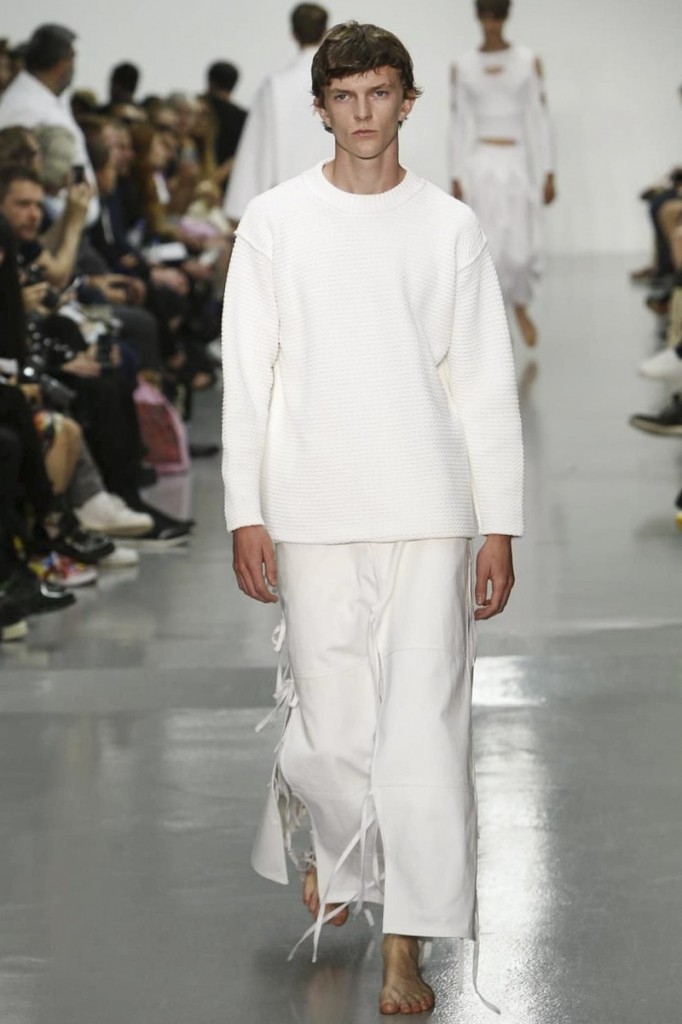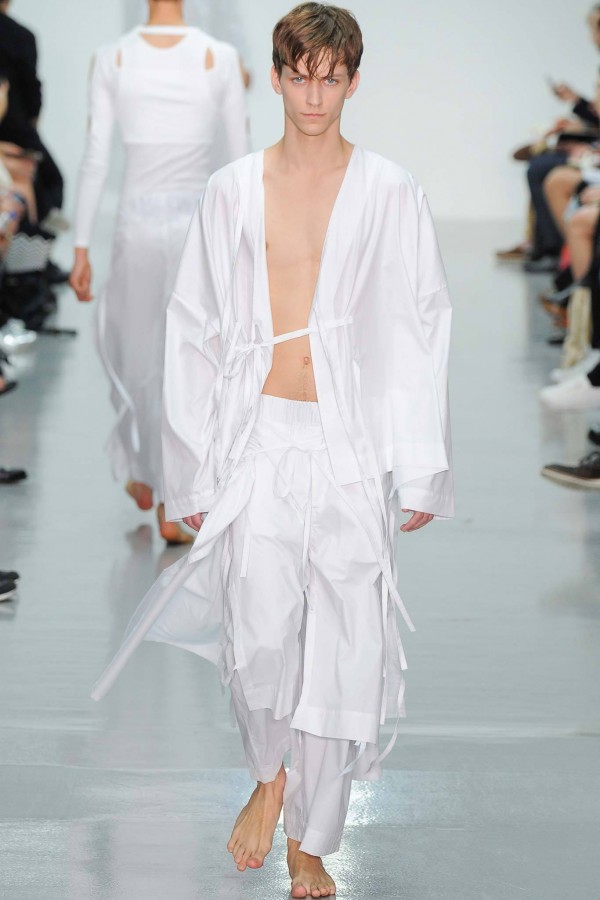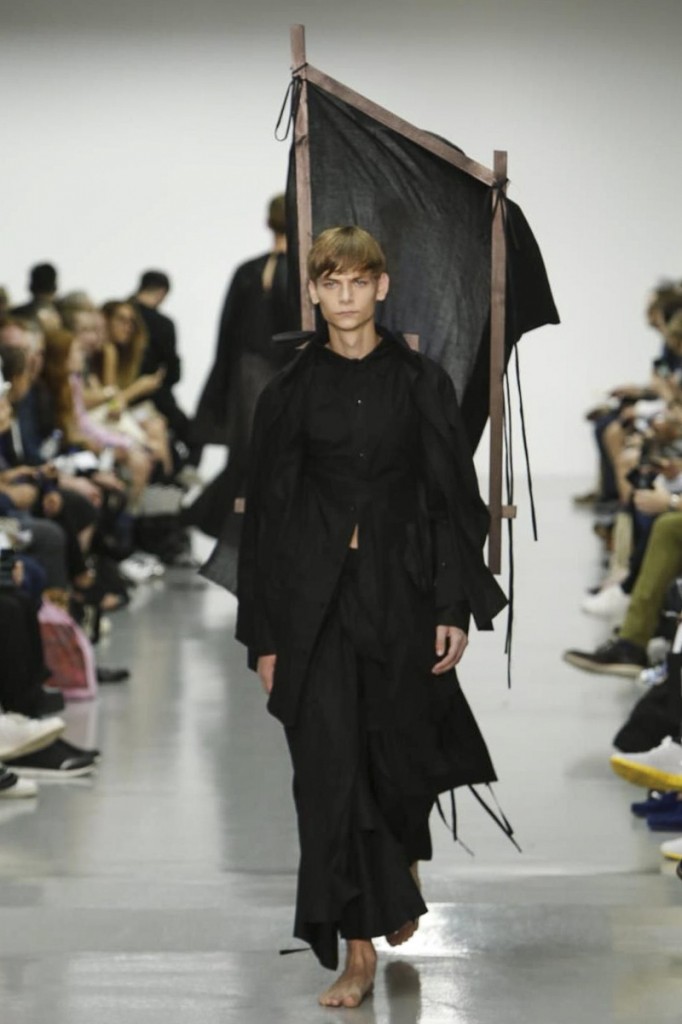INHALE is a cultural platform where artists are presented, where great projects are given credit and readers find inspiration. Think about Inhale as if it were a map: we can help you discover which are the must-see events all over the world, what is happening now in the artistic and cultural world as well as guide you through the latest designers’ products. Inhale interconnects domains that you are interested in, so that you will know all the events, places, galleries, studios that are a must-see. We have a 360 degree overview on art and culture and a passion to share.

You hear about this thing called a fashion moment—a storm of emotion leaving the audience verklemmt and the designer overwhelmed—but the genuine article is rare enough to be an urban myth. Until it actually happens. Which it did today during Craig Green’s show. We were primed for something with Green’s solo debut on London’s fashion stage—his past appearances have involved a grand scale and a fearlessness that rather transcended the notion of clothes as we know them. His new collection added purity to the mix, and purity as we understand the notion in spiritual terms. “Zen” was one of Green’s own reference points, but the mind spiraled away effortlessly into visions of samurais and gurus and barefoot penitents and the Polyphonic Spree and even, for one bedazzled brainiac in the audience, the Children’s Crusade.
Cosmic drama has been a mainstay of Green’s work since he began, from the tie-dye that evoked hippie idealism, to the sweeping robes that suggested pagan ritual, to the huge frames he attached to his clothes in defiance of quotidian limitations. Those frames reappeared in his new collection trailing banners, the bannermen leading “a mass exodus toward the brink of abandon,” according to the press release. Following the show, Green himself cryptically dubbed this catwalk exodus “a silent protest.” He would say no more, preferring to maintain a sense of mystery. But one prime possibility was that his collection was a repudiation of crass repetitive materialism and an endeavor to create a new community in fashion. At the same time, there was such vulnerability, such melancholy (Wim Mertens’ “Struggle for Pleasure” was the soundtrack), that one was compelled to acknowledge the impossibility of such a vision. Green seemed to agree.
As for the garments themselves, there was, for the first time, a focus on the clothing rather than the cloth. There were two silhouettes: exploded, skirt-like volumes that were defined by strings that tied fluttering layers around arms and legs, and body-conscious jersey wraps with significant cutouts. Warrior, priest, sacrificial lamb…all of these came to mind. In Green’s effort to expand the idea of what clothes can convey, he comes close to Rei Kawakubo. But another maverick sensibility also insinuated itself. Vivienne Westwood called her epochal Seditionaries collections Clothes for Heroes. That’s what we saw on Green’s catwalk. That’s what the audience was responding to. The Cult of Craig is about to explode.
via style.com






























































